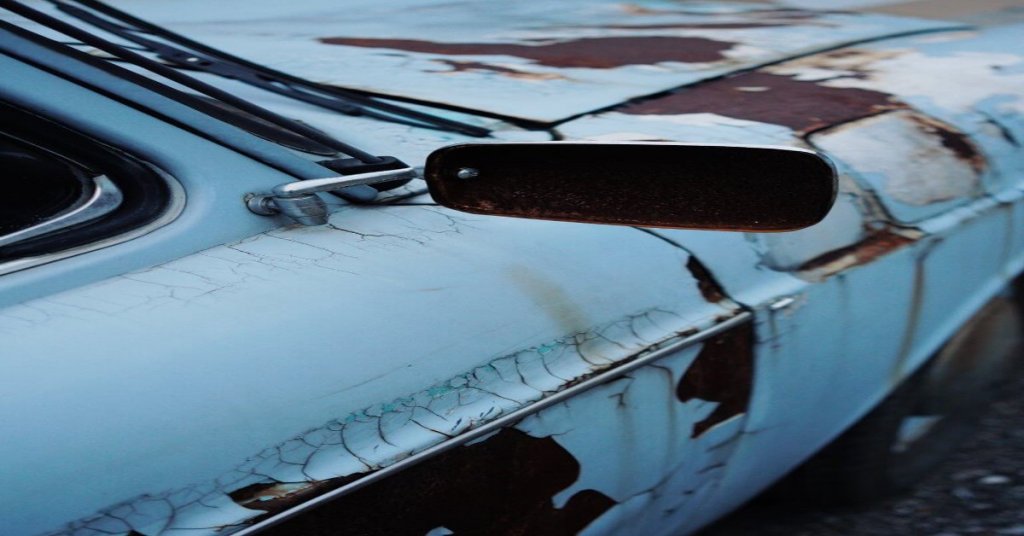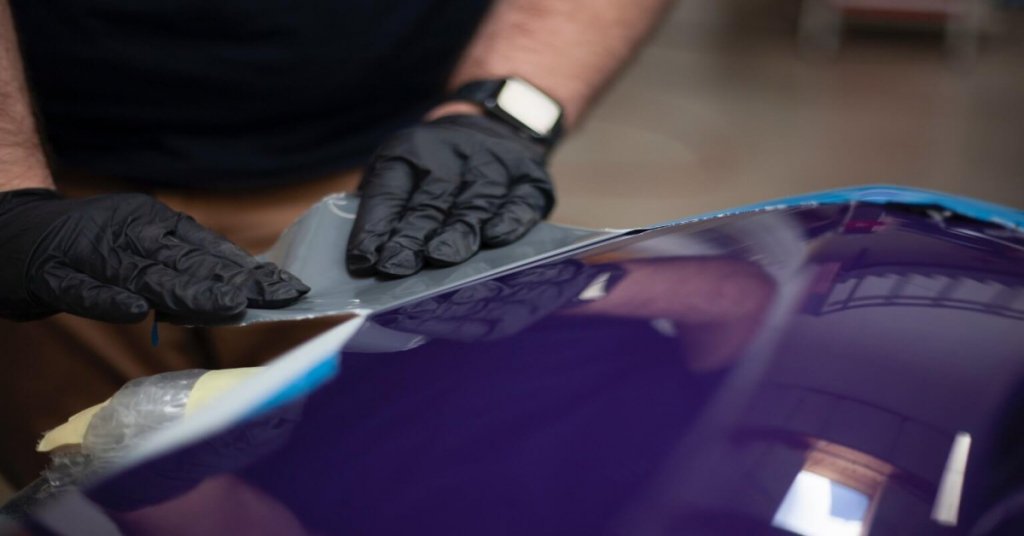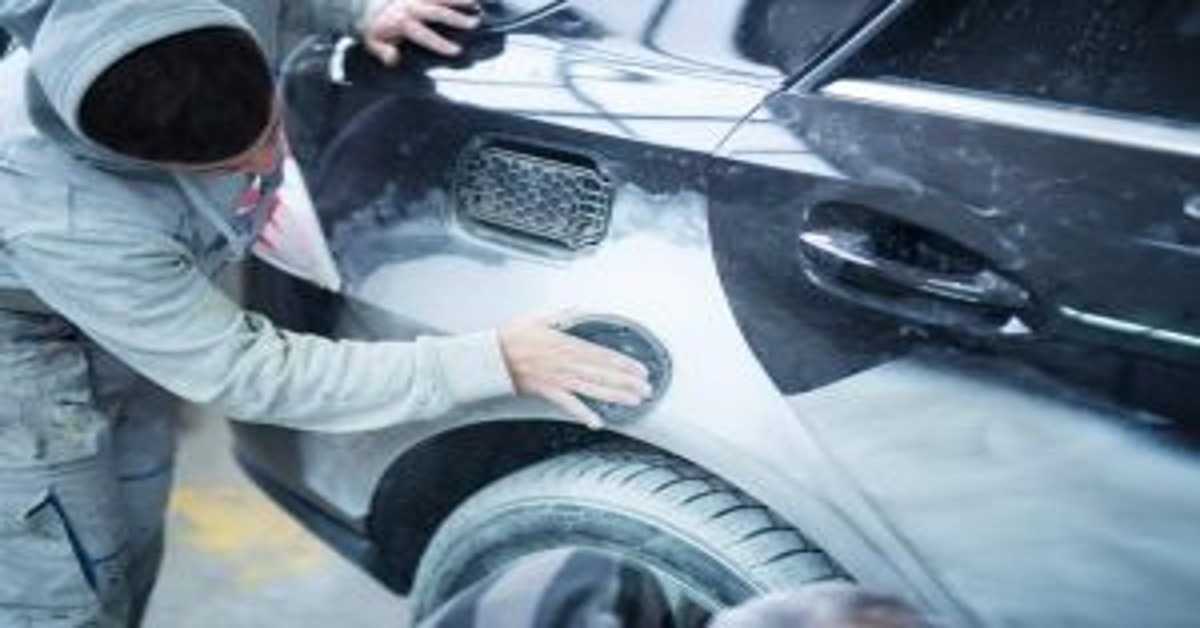Maintaining a car is a duty, one that requires timely service and a little prudence. But when it comes to keeping its shine new and glossy,
one cannot be judged for having a little more pedantic approach. Because nothing says “old” quite like damaged paintwork on a car paint.
There are numerous things around that can potentially cause harm to your car’s paint and in this feature, we’ll help you identify each one of them.
But before we start the list, it’s important to mention that all the items listed here can severely damage paintwork and are only for you to be aware of. You should not try to use it to spoil the look of someone else’s car.
With that out of the way, let’s get on with the list.
Table of Contents
Soda
Spilling liquids is a common slip, it can happen to the best of us. Though you wouldn’t be quite so forgiving if you walked out into a parking lot and found out some guy drenched your car in Coca-Cola.
Soda is acidic in nature and can slowly work to eat your car’s paintwork. Being quick on your feet is the common wisdom whenever you find spilled liquid on your car as most drinks, to some level are acidic and can scrape the paint off making your car look like it’s been whitewashed.
Contrary to the general belief though, coffee is not a powerful liquid abrasive for the paintwork. It is not seen to cause any substantial damage in the immediate moment or even some minutes ensuing the spill. Nevertheless, you should always wipe any liquid off your car as and when it is knocked over.
Stickers & Magnets

Some people might like to adorn their cars with fancy stickers and shiny magnets to enhance the look. But one should bear in mind that these accouterments will without a doubt rub off the paint when they are removed or as they eventually fall apart. Stickers can do slight damage to the paint when they disintegrate from normal wear and tear.
Tacked to the paintwork for so long, it is hard for them to come off smoothly, creating a situation similar to that of bubble gum that gets stuck in hair.
Magnets on the other hand can scratch your paintwork if yanked or dragged from its place and you can count on kids to do that. Aside from the fact that they are a play item for kids belonging either in the kitchen or on a kid’s cupboard, needless to say, if and when it is removed, it will cause some level of damage to the paintwork of your car.
Car Covers
Covers are an extremely effective way to protect your car from dirt, dust, and grime, especially at times when clouds are on the horizon.
However, under certain conditions, covers can cause damage as well.
Car covers come in various shapes, sizes, and types, ranging from the right fit with quality material to improper fit with terrible material. Covers made out of neoprene, plastic, or any other non-breathable material,
if put on a dirty car can trap moisture inside them which mixes with the dirt particles to cause damage to the paint of a car. If you are going to use a car cover, be sure to wash the car first, especially if the car’s going in for the entire season.
Shaving Cream

Unlikely that you may happen to shave your beard using a wing mirror, we thought, we should let you know about this one.
This is one of the most severe discoloration agents you can find to ruin your car’s paint. It is also the reason why shaving cream has gained popularity among pranksters.
Shaving cream, upon drying, can react with the paint to cause extreme discoloration of the affected area. If you ever find shaving cream on the exteriors of your car, be quick to act and wash it off with soap while it is still foamy.
Acetone
Acetone is a colorless, pungent, and highly volatile solvent that is used to clean up any mess in a detailing process. It removes glued tar, grease, and hardened paint splatter off the paintwork and on the metal body.
But one must be very sparing with this compound as it is capable of stripping the wax clean off and can eat the paint right to the base if left for even a few minutes.
Acetone dissolves the paint by reacting with base molecules. Its high miscibility with organic paints and acrylics, allows it to easily penetrate and weaken its composition. This is why the damage caused by acetone is similar to that of oxidation.
The Sun
Driving on a hot sunny day, paint damage is probably the least of your worries as you’re already crossing your fingers to not have to face the wrath of an overheating engine or a faltering air conditioner. Sun damage to the paintwork of a car is a common and natural phenomenon.
Exposure to UV rays of your car by burning in the parking lot, especially on a sunny day is enough to start the deterioration process of the paint.
When a car is left under the sun for a sufficiently long period of time its paint coating undergoes a pernicious chemical reaction called oxidation. It is the combining of oxygen and heat in which the molecular structure of the paint crumbles, giving it a faded look.
Egg
In the list of liquids that can damage the paintwork of your vehicle, this might be the strangest. While on the surface, the idea of a raw egg on a car might seem harmless, but that isn’t the case at all. Pelting eggs as a prank is a commonplace idea but this might just be more than a prank if someone does this to your car.
Let’s look at how someone might use eggs to despoil your car for its glossy look. First, the broken eggshell will scratch the clear coat ranging from mild to deep cuts through the base coat.
Then, this passage of cracks created by the shells is used by the yolk to wreak havoc on your car’s paintwork. The yolk is the real bane to your car’s paint as it is an acidic compound that if not cleaned quickly can seep through the outer coat and spoil the base paint.
The longer it is able to sit, the more harm it will do. If you find yourself in this situation, carefully wipe the shells first as you don’t want more scratches then wash the car thoroughly. And in the unfortunate event that you are too late to take action, you would have to have the area repainted.
Bologna And Mustard
Much like the eggs on a car prank, this is a part of a new iteration of the same joke. However, in comparison with bologna and mustard for damaging the paintwork of your car, the eggs do not cut the mustard as a harmful substance.
If somehow you end up being part of this sophomoric prank, you could be looking at a full repaint of your car. Bologna also called baloney, is a meat product made from ground pork. Being a processed and packaged food item,
this delicious prank piece contains additives and preservatives which are the main elements responsible for damaging the paint of your car. The baloney is accompanied by mustard to further the damage. The preservative in the bologna is inimical to the paintwork and can blotch out the entire body if left for some time.
Brake Fluid
Automotive paint is susceptible to a number of things, One of these things is a chemical called glycol and since we’re on the topic of things that damage a car’s paint, to no one’s surprise, it is the main agent present in the brake fluid. Glycol is an extremely hostile chemical and acts as a thinner to the paintwork of your car.
If it is left for about 10 minutes on the surface of your car, it can create stripe marks of scraped-off paint but that is not all the damage it is capable of. If left for longer, it can even erode the base layer of the paint going all the way down to the bottom-most layer, the metal surface of your car.
The key to saving your car here is a prompt reaction. A long enough exposure of your vehicle to the brake fluid will require you to get a full rework of your car’s paint done. To avoid this costly and dangerous predicament, we advise you to wash off the fluid as quickly and as thoroughly as possible. A trip to a nearby car wash might also be a good idea.
Bird poop
Bird poop, is a common reason for paint damage, one that is faced most frequently by all of us, and is arguably one of the most annoying causes of paint damage, due to the grossness it brings along with damage.
Aside from the general disgust, this fount of a cause for car paint damage brings routine harm and wanton vandalism to your paint job. Bird poop has an acidic nature that can burn through the upper coat of the paint.
Though this process is slow with visible effects manifesting in about 1-2 days. Waiting too long to act can leave you with a patchy and faded car. This process is especially heightened in intensity in conditions of hot weather as the poop hardens on the paint surface and reaches even deeper to cause damage.
Petrol
If you are even a bit concerned about your paintwork and its all-around consistency, you should try not to top off the tank every time you visit the gas station.
Petroleum distillates are capable of eroding the wax with ease and can even penetrate the clear coat if left untreated for long.
It is almost always that there will be some spillage of petrol when you fill up the tank leaving patches and marks of washed-out paint around that region. However If by any chance you happen to spill petroleum on your car’s paintwork, we recommend you use an instant detailer to wipe the affected region.
Note- Simply wiping with a piece of cloth is not a good idea as it will not get rid of the distillates but rather spread the chemical even more.
Silly String
Silly Strings are made of a mixture of chemicals that give it its silly composition as well as its fruity colors. However, the fruity part is where the trouble lies for your car’s paint.
The resins and colorants present in the strings are caustic to the paintwork of your car and work together to wreak havoc.
The resin ruins the vinyl tops and eats through the upper coat giving way to the colorants to leave marks of their color. This effect is magnified by the rain. It may seem like a disappointment as it’s a fun way to celebrate, cutting cake on the hood while spraying colorful strings.
We are not saying that you should quit fun but being a little careful with a chemical that is harmful to your car is something you should be in the know of.
The least that you can do after a party is a thorough cleaning. We recommend cleaning your car top to bottom with an added focus on areas where the mess is particularly more.
You Yourself
Yes, you. Using your finger to write, wash me, or scurrying your fingers across the dirt to sketch names might give some cathartic pleasure but it is not at all wholesome to your vehicle.
Rubbing the exteriors of a car, especially the ones buried in dirt can leave a lasting impact. Dirt is abrasive much like sandpaper and can end up leaving permanent marks (at least on the upper coat). If you find such marks after long disuse of your car, a complete wash and wax is the way to go.
Ashes
This is an interesting one as this substance is harmful to your car only in certain conditions. Ashes perching on your car’s hood blown through the gushes of wind are harmless by themselves but if your car happens to be wet these flaky and flimsy residues of fire can burn your paintwork to embers.
According to the American Automobile Association, ashes, smoke, and soot contain potassium and calcium that when mixed with water can become corrosive to the paint of a vehicle.
Shoe Polish
Even if you have a black car, polishing using shoe polish at home is a terrible idea. Sorry for the PJ but this home item is another one of the favorites in the arsenal of pranksters and ruins with the highest success rate as it is hard to notice it sitting on the exterior of your car.
Shoe polish is highly hostile to the paintwork of a car and strips it right off if left for more than 30 minutes. However, there is something you can do to safely remove the polish.
Apply rubbing alcohol using a microfiber towel on the affected area to wipe the shoe shiner, then wash the car normally and you will be good to go.
Salt
Salt is a corrosive compound that expediates the rusting process on cars. Metal parts on cars can attract salt from a number of different areas, with precipitation, road salts, sitting long in disuse after rain, etc.
Your vehicle is bound to accrue salt throughout its lifetime that will eat away at the paint slowly and continually.
To avoid the build-up of salt it is recommended to get your car waxed and polished every 4-5 months and have the car washed regularly as the clear coat is the only thing standing between the rust and your paintwork’s shine.
Tree Branches
While tree branches might do more than just paint damage, they are one of the main causes of premature rusting. Parking in a precarious lot or driving on a windy day can have your car dealing with a host of things that can cause potential paint damage.
Road debris and broken branches are among the top wreckage items that you need to look out for. These items can chip the paintwork if not completely strip it which can cause moisture to seep in and expedite the rusting process.
Does Car Insurance Cover Paint Damage?
Where your car insurance policy will cover the paint damage and where it won’t depends on two factors- Type of insurance policy and Severity of the damage.
A comprehensive policy usually covers damages that are not related to collisions and accidents but there are still the deductibles that you need to take into account before filing for the claim.
You need to pay a certain amount of deductible before the insurance takes care of the rest of the damage and in case of very minor damage where the deductible amount paid by you is also very low,
your car insurance may not pay anything outside of the repair bills. This means a small abrasion from a collision will not be covered by your car insurance and more importantly, will not be a good idea to file insurance for.


